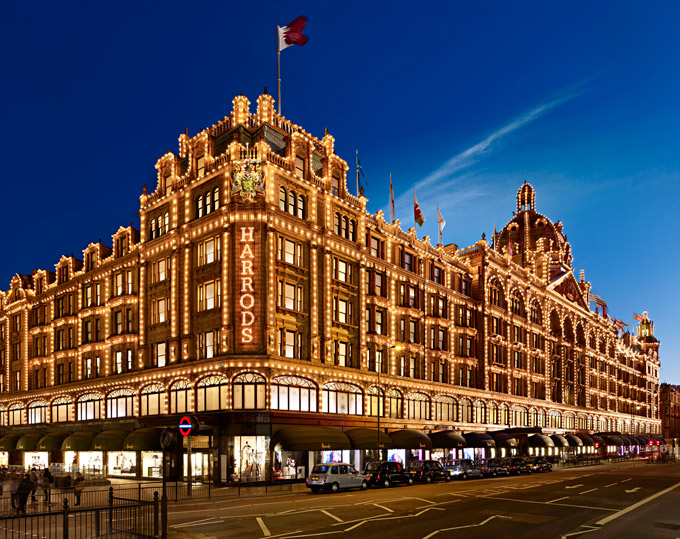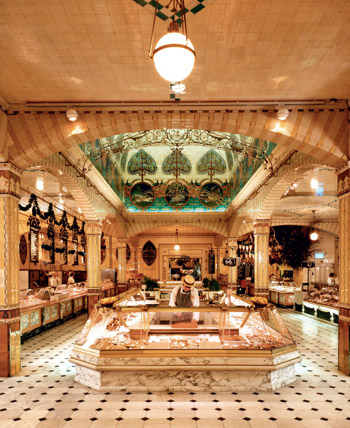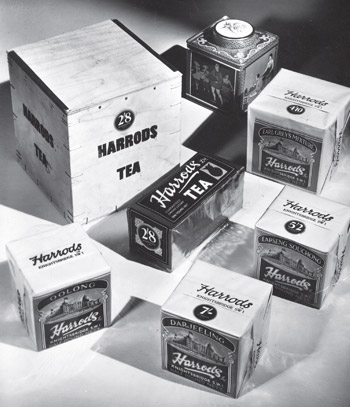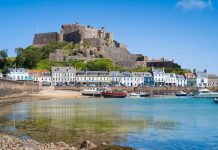Europe’s largest department store is known for its fantastic food halls, spectacular design and wide range of wares. But this amazing emporium all began with a humble cup of tea

A stroll through what is London’s – if not Britain’s – most recognisable store is both a step back in time and a glimpse into the future. Classic tailoring and traditional teas sit alongside cutting-edge technology and high fashion, spread across seven floors of the iconic Harrods department store. Its food halls have changed little over the years; their opulence still draws crowds of serious shoppers as well as excited wide-eyed tourists, and almost all will leave clasping at least one of the coveted green and gold bags.
It all started with the humble cup of tea. In 1834, a young Charles Henry Harrod (1799-1855) moved from Clacton to Stepney in East London where he began trading as a tea merchant and grocer. The ambitious man had good taste and great instincts; in 1849 he rented a small shop on Brompton Road, Knightsbridge, just as the area was developing into one of the most fashionable in London. By the latter part of the decade the Harrods legend was born and Charles and his two assistants worked tirelessly to ensure the store’s success. Good timing also had a part to play in the early success as The Great Exhibition of 1851 held in nearby Hyde Park further improved Knightsbridge’s social standing and, as a direct result, the wealthy set up home in the area turning it into a prosperous and exclusive London postcode.
A good head for business ran in the family – Charles’ son (Charles Digby Harrod) built on his father’s success, purchasing the store in 1861 and repaying the debt incurred in buying it within three years. He also increased the turnover to a very healthy £1,000 per week, acquired a further two adjoining buildings to 105 Brompton Road, and introduced a delivery service. The small green and gold delivery vans can still be seen nipping around the busy streets of West London, but today’s traditional looking vans are modern, electric powered vehicles.

By 1880 the store opened from 7am to 8pm and employed a 100-strong workforce. But the story of Harrods is not without its share of adversity. In 1883 disaster struck when a fire broke out in the store while it was fully stocked for a busy Christmas period. The fire, on 6 December 1883, destroyed everything. Despite the tragedy, all deliveries were made on time for Christmas and profits hit an all-time high that year. The store was somewhat hastily reconstructed to the design of Alfred Williams, then the assistant district surveyor for Kensington and Harrods’ architect since 1881. The new purpose-built and ‘fireproofed’ store was more handsome than its predecessor and stretched back to the east side of Queen’s Gardens.
Harrods was setting trends and breaking rules – in 1885 its strict ‘no credit’ rule was removed, enabling regular customers to open personal accounts. Distinguished English characters including the writer and poet Oscar Wilde and actresses Lillie Langtry and Ellen Terry were amongst its first account customers.
Shortly afterward, in 1889, Charles Digby Harrod retired and the business was floated on the stock exchange as Harrods’ Stores Limited. Over the next decades Harrods continued to grow both in profits and size. Neighbouring sites were acquired until the store occupied the island site that we see today. Ladies and menswear fashion departments opened, a hairdressing salon, photography and piano departments were added, and a bank and estate agency were among the new additions. In 1884 the first Winter Sale took place. Today, Harrods’ Winter Sale is a key event in the British shopping calendar. Cleverly marketed with the words ‘there is only one sale’ – it attracts celebrities and crowds of shoppers snaking around the store, patiently awaiting the opening.
The Harrod family may have sold the business in 1889, but the ideals and passions remain the same. In 1911, Harrods unveiled an extravagantly furnished Gem Room with ormolu (opulent, gold-coloured) fittings and marble clad walls. Seven decades later, the Fine Jewellery Room was created on Harrods’ ground floor. Opened in 1985, this Art Deco style room is one of the first ‘rooms’ shoppers walk into: completely dedicated to leading fragrance brands, it is an experience like no other. More recently, in 2010, Harrods opened the International Designer Room on the first floor of the store. It houses world-famous international fashion brands including Alaïa, Balenciaga, Céline and Yves Saint Laurent.
But it all started with one man – the tea merchant – and his legacy remains central to the store even today. Just as in 1849, customers are greeted with handsome coffee storage containers, served on wooden counter tops with traditional weighing equipment, accompanied by the most welcoming smell of roasting coffee beans. Harrods prides itself on selling the finest tea and rarest coffee beans, as Tea and Coffee Buyer Yousef Serroukh explains: “We have more than 300 different types of pre-packed teas, and 165 single-estate, single origin teas. Not many other stores can say the same.”

Yousef has worked for Harrods for the past nine years, the latter five as its Tea and Coffee Buyer. He travels to the world’s tea-growing nations – India, Sri Lanka, China, Japan and Taiwan – to purchase the finest, ‘garden-fresh’ leaves. “The best way to learn about tea is by going to source and having a direct relationship with the producer, the estate and the growers,” he explains. “Our customers want the best teas and they will ask for certain ‘garden marks’, which is similar to a designer brand. It is a point of difference and a symbol of quality.”
Although it has always been a very traditional British pastime, tea drinking trends have changed over the last few years, explains Yousef: “We still have our traditional customers who want good quality black teas, but we also have a new audience who want to try flavoured teas – maybe something with hints of strawberry – and we have seen an increase in green teas (up 30 per cent on last year) and speciality teas (up 165 per cent on last year).”
The fashion for coffee drinking threatened to topple tea’s status as the favoured British brew, but it seems to be experiencing a revival, even creating tea connoisseurs. “Our discerning customers want to share their tea with family and friends – not dissimilar to wine enthusiasts. As they pour they’ll explain ‘this is a single-blend, Darjeeling Castleton from the second flush, which grows about 6,000 feet above sea level’. Sharing the characteristics of the tea has become an important part of the experience.”
You can taste a range of teas in store and Harrods’ experts enjoy telling the story behind each cup they serve with an in-depth description of the source of the product. And if Charles Henry Harrod walked into the store today, he would likely be welcomed with a cup of tea – the very thing that started it all.
Related articles
Top tearooms in Britain announced





 © 2024
© 2024